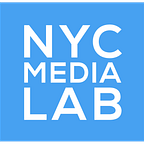Innovation Monitor: How nature is inspiring technology
Innovation Monitor: How nature is inspiring technology
View this email in your browser
Welcome to this week’s Innovation Monitor.
The first and second Industrial Revolutions brought about an exploitative paradigm that’s going strong nearly 200 years later: extracting natural resources, processing these resources using enormous amounts of fossil-fuel-based energy, and in turn releasing CO2 emissions that have steadily warmed the planet over the past century. Nature has been a resource rather than a co-worker.
But things have changed over the past two decades. We’ve been hearing about plummeting clean energy costs for years, and have solid data to back it up. Last November Lazard did something different with its energy cost analysis: instead of only comparing estimated electricity costs from new power plants, it included average electricity costs from existing power plants.
With the additional data, their report showed that new wind and solar plants offered cheaper electricity than existing gas and coal plants. A month before that, clean energy company NextEra Energy, which has built the world’s largest collection of wind and solar farms, did the unthikable and surpassed ExxonMobile to take the spot of most valuable energy company in the US.
Utilizing nature’s resources in a non-exploitative manner is just the first step. BCG’s report, Nature Co-Design: A Revolution in the Making, predicts the next industrial revolution will “obviates the need for energy-intensive processing of raw materials and builds solutions under atmospheric pressure conditions and in relatively low temperature environments instead,” working with nature at the nano level.
What does nature co-design look like in practice? In this newsletter, we’ll look at some concrete examples, to better understand how technology will work alongside biology in the coming decades.
Thank you for reading, and as always, if you were forwarded this email, you can easily sign up here!
All best,
Erica Matsumoto In the Lab In her TED talk, Mediated Matter group’s Neri Oxman noted a similar shift — further away from “assembly and closer into growth.” Not the first industrial revolution’s World-as-Machine, but, as Oxman wrote in 2012, World-as-Organism. Or, in other words, biology-as-a-service. In a 2016 WEF piece, she wrote how “E.coli, a bacterium that lives in the gut, can be transformed into edible sugar; grass converted into diesel; corn transfigured into plastic.”
Biodesigner Natsai Audrey Chieza demonstrated how nature co-design can impact the incredibly wasteful world of fast fashion — “a design, manufacturing, and marketing method focused on rapidly producing high volumes of clothing.” Around 85% of textiles thrown away in the US end up burned or dumped into landfills. The fashion industry produces 10% of the world’s greenhouse gas emissions.
Chieza and her lab have been exploring bacteria called streptomyces coelicolorm, which produce an antibiotic that ranges in color from blue to pink to purple. Through Project Coelicolor, her team developed “design-led microbiology protocols to dye silk scarves into different patterns and colors using this bacteria.” Food & Fashion Startups have taken nature co-design beyond the experimental stages. Bolt Threads, for example, uses protein from spider webs to “create and manufacture sustainable apparel and textiles.”
Plant-based milk, meat, and, fish are already established, even in fast food restaurants. Upside Foods raised $161M last year to produce lab-grown meat, producing animal cells in a lab.
Reimagining Plastics Plastic is a miracle material: it’s cheap, durable, and infinitely malleable. “A brand-new, made-in-America bottle that will last thousands of years costs less than the price of a single McDonald’s french fry.”
But these benefits come at an environmental price. We’ve created nearly 20T pounds of plastic and add another trillion each year. Recycling plastic — as good as it makes us feel — doesn’t really work. Only 9% of plastic waste is recycled, 12% is incinerated, 70% goes to landfills, and 12 million tonnes end up in the ocean each year.
Mango Materials is working on creating an all-purpose alternative via large-scale upcycling, starting with methane gas emissions and ending up with biodegradable products. They have a great walkthrough of their process on their site, and their co-founder is featured in the below Seeker video.
Zymergen is rethinking manufacturing as a whole (their video feels like a fictional promo from a sci-fi film), creating electronics components (like polyimide films), consumer care products (like insect repellants), and plant nutriants.
Conclusion The more I read about this new generation of nature-inspired innovation, the more I realize how this can transform the way we think of progress and business. Shifting our mindsets from one where technology extracts from the planet rather than creates alongside it, as a co-worker, would be such a shift in our mindsets. Especially, as heatwaves and headlines remind us climate change is here, it’s more important than ever to change the way we work with planet earth. This Week in Innovation History
August 12th, 1981: The first IBM personal computer is introduced
The IBM PC Model 5150 is launched to the world, only a year after the project was approved. It was only a lean team of 12 that worked for the year, “breaking all the rules” to bring the computer to market. That rush to market led to a great deal of operating system issues that plagued software programmers. One of the results was a shift to programmers opting for Microsoft’s DOS as the PC’s operating system and competitors quickly cloning the PC, pushing IBM further and further into the business computing sector.
This email was sent to <<Email Address>>
why did I get this? unsubscribe from this list update subscription preferences
NYC Media Lab · 370 Jay Street, 3rd floor · Brooklyn, New York 11201 · USA
